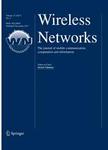版权所有:内蒙古大学图书馆 技术提供:维普资讯• 智图
内蒙古自治区呼和浩特市赛罕区大学西街235号 邮编: 010021

作者机构:Politecn Milan Dipartimento Elettron & Informaz I-20133 Milan Italy
出 版 物:《WIRELESS NETWORKS》 (无线网络)
年 卷 期:2008年第14卷第4期
页 面:435-447页
核心收录:
学科分类:0810[工学-信息与通信工程] 0808[工学-电气工程] 0809[工学-电子科学与技术(可授工学、理学学位)] 08[工学] 0812[工学-计算机科学与技术(可授工学、理学学位)]
基 金:Ministry of Education, University and Scientific Research Ministero dell’Istruzione, dell’Università e della Ricerca, MIUR
主 题:3G UMTS CDMA2000 radio planning base stations location configuration signal quality constraint mathematical programming models Tabu Search
摘 要:Radio planning and coverage optimization are critical issues for service providers and vendors that are deploying third generation mobile networks and need to control coverage as well as the huge costs involved. Due to the peculiarities of the Code Division Multiple Access (CDMA) scheme used in 3G cellular systems like UMTS and CDMA2000, network planning cannot be based only on signal predictions, and the approach relying on classical set covering formulations adopted for second generation systems is not appropriate. In this paper we investigate mathematical programming models for supporting the decisions on where to install new base stations and how to select their configuration (antenna height and tilt, sector orientations, maximum emission power, pilot signal, etc.) so as to find a trade-off between maximizing coverage and minimizing costs. The overall model takes into account signal-quality constraints in both uplink and downlink directions, as well as the power control mechanism and the pilot signal. Since even small and simplified instances of this NP-hard problem are beyond the reach of state-of-the-art techniques for mixed integer programming, we propose a Tabu Search algorithm which provides good solutions within a reasonable computing time. Computational results obtained for realistic instances, generated according to classical propagation models, with different traffic scenarios (voice and data) are reported and discussed.